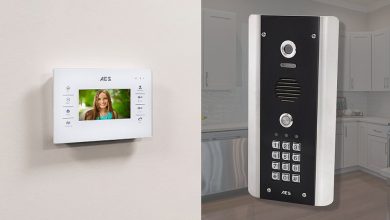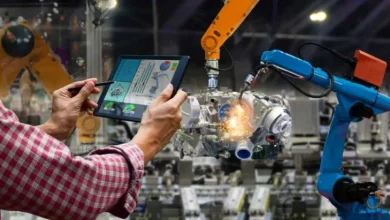Over time, drones have demonstrated their ability to increase productivity and effectiveness. Drones have unique possibilities for both commercial and leisure use. Unmanned aerial vehicles (UAVs), another name for drones, are flying machines that operate remotely.
The availability of a commercial drone led to public interest. Companies offering drone services are now increasing. Whether for leisure or business, commercial use of UAVs is now standard.
Utilizing drones to examine, monitor, and secure remote locations is becoming common. Drones in the healthcare industry were valuable during the COVID-19 pandemic to transport test samples and medications. Commercial UAVs are highly versatile for people looking for a career in drone technology or a company executive looking for integration. Remembering that this industry is about more than just following laws and regulations is crucial.
First Things First
Purchasing equipment and software, hiring staff, and providing training are all necessary for integrating a commercial drone into operations.
Drone use is rapidly growing, with applications ranging from distant location monitoring to scientific study and surveillance to recreational use. The anticipated growth of the drone market worldwide is $43.1 billion in 2024, compared to $14.1 billion in 2018. Drones are an industry that is growing and attracting the attention of both company executives and amateurs.
5 Crucial Questions Users Need To Ask Themselves
There are numerous companies in the market that offer drone services. For consumers, they need to consider these five crucial questions before making a purchase.
Listed below are the five key questions to consider before buying a drone for business or recreation:
Question 1: What Purpose Will It Serve?
As the number of drone companies is growing, so is the number of uses for drones. Commercial drones uses specifically for various uses include:
- Photography
- Videography
- Industrial inspections
- Logistics and delivery
- Surveillance
- Recreational use and leisure
Prior to making a purchase, it’s critical to determine the drone’s main purpose in order to prevent expensive mistakes.
An excellent surveillance unmanned aerial vehicle (UAV) would be one that seamlessly integrates its built-in camera with other inspection applications. A UAV equipped with a thermal imaging system provides the tools needed for many types of inspections. Users and businesses can undertake utility checks, solar inspections, and building and roofing inspections using high-definition drone cameras.
Question 2: What Is The Budget Limit?
The price of a cheap drone starts at about $100 USD. The commercial drone market in that price range typically has low-quality plastic construction and low-resolution cameras. Additionally, because they lack the sensors found in more costly drones, cheaper drones are more difficult to operate.
Although a more expensive drone is more expensive, customers will save money on long-term repair and maintenance expenditures. Drone pilots are more productive and have more peace of mind when their operations run smoothly. Sturdier drones allow operators to focus more on tasks that are essential for the organization.
Question 3: What Functionalities Does The Drone Offer?
Knowing the terminology used in the drone market while purchasing a drone for the first time is highly beneficial.
Listed below are common drone terminologies:
-
- Gimbal: A mechanical camera stabilization device that allows for smooth video and crisp photography even in high-wind and stormy weather conditions.
- RTH (Return to Home): A safety mechanism that enables the drone to fly itself back to the pilot’s starting point or position.
- Follow-Me Mode: A function that lets a commercial drone follow a target autonomously. It usually does this by using a beacon attached to the target, a remote control, or a GPS signal from a mobile device.
- Headless Mode: In Headless mode, the drone always flies forward, backward, left, or right. The Headless mode works best for beginner pilots. The mode lets the drone follow the remote stick’s control in any direction.
- Brushless Motor: Brushless motors are more cost-effective, quieter, and have a longer lifespan than their brushed counterparts. The user can minimize maintenance costs by using brushless motors, as they require fewer part replacements due to wear and tear.
- RTF (Ready to Fly): Drones with minimal to no assembly requirements.
- BNF (Bind n Fly): BNF drones are simply RTF drones that come with a receiver—a radio controller is available separately. Commercial drones uses radio controllers for a more economical operation.
- FPV (First Person View): The live video stream straight from the drone’s camera. Piloting is one usage for it, along with framing photos or films. Pilots typically utilize FPV goggles for an immersive experience when competing in drone races.
Question 4: What Are The Drone Regulations In The Area?
Understanding the laws that apply to drone use in different nations is essential to operating them lawfully. Comprehending the legislation is crucial for operating drones in a responsible and safe manner. Depending on the location, some countries require a drone’s specific weight when flown over crowds.
Question 5: Is It Simple To Replace Parts?
Drones experience deterioration, like any technology. It is crucial that replacement components are readily available and that maintenance is simple. This is to guarantee that a business can use even the best commercial drone for a few years.
When buying a drone, ensure that the distributor or manufacturer sells replacement parts, including motors, batteries, controls, and propellers.
Sustainability And Financial Advantage
Instead of in sales, the industries of infrastructure and agriculture are the first to use commercial UAVs. A commercial drone efficiently waters and feeds plants while reducing workers’ exposure to illnesses because of its wide coverage area.
Compared to urban and suburban neighborhoods, there are fewer safety and privacy concerns when using drones within the countryside. Industry savings through more economical methods of distribution, transportation, and inventory management are possible thanks to the best commercial drones.
Nowadays, a wide range of sectors are using drones. This denotes a great demand for workers to support the technology. The following industries require drone operators:
- Emergency management
- Entertainment
- Logistics
- Surveillance
- Security
- Construction
- Agriculture
- And many more
What Beneficial Effects Have Drones Had On Specific Projects?
Many fields have benefited greatly from the use of drones:
- Scientists and researchers use UAVs for observation purposes, such as wildlife and geological monitoring.
- Drones help protect manned aircraft by keeping an eye on low-altitude airspace and spotting unapproved drone activities.
- To keep an eye on how wildfires are spreading, firefighters are turning to drones.
The Present State of Drone Laws
The commercial drone market has a bright future in both finance and the economy. A more extensive introduction of commercial drone services has been postponed. The postponement is due to the FAA restrictions addressing privacy and safety issues.
On occasion, the agency approved restricted testing of commercial drones. One of its drone usage laws requires drone flight to be watched directly by a flight controller. It must also be without the use of any kind of gadget to save eyeglasses. In order for the observer to identify any hazards or impediments, the flight is required from start to finish.
The Federal Aviation Administration changed several regulations over the course of the years as drone technology advanced. The government recognizes that these are “incremental” steps in the direction of allowing UAVS to fly in U.S. skies.
The Bottom Line
The introduction of a commercial drone into the national airspace will help more than just online retailers like Amazon. In addition, it helps a number of other industries, including public safety, agriculture, and disaster management.
UAV integration offers billion-dollar growth and job development as economic benefits. However, drone technology will have a difficult time becoming widely used, just like any other revolutionary breakthrough.
Drones are an expensive technological asset. It’s critical for consumers to conduct research before deciding which gadget is best for personal or professional use. Before making a purchase, it’s vital to consider these five questions to get the most out of the drone.




